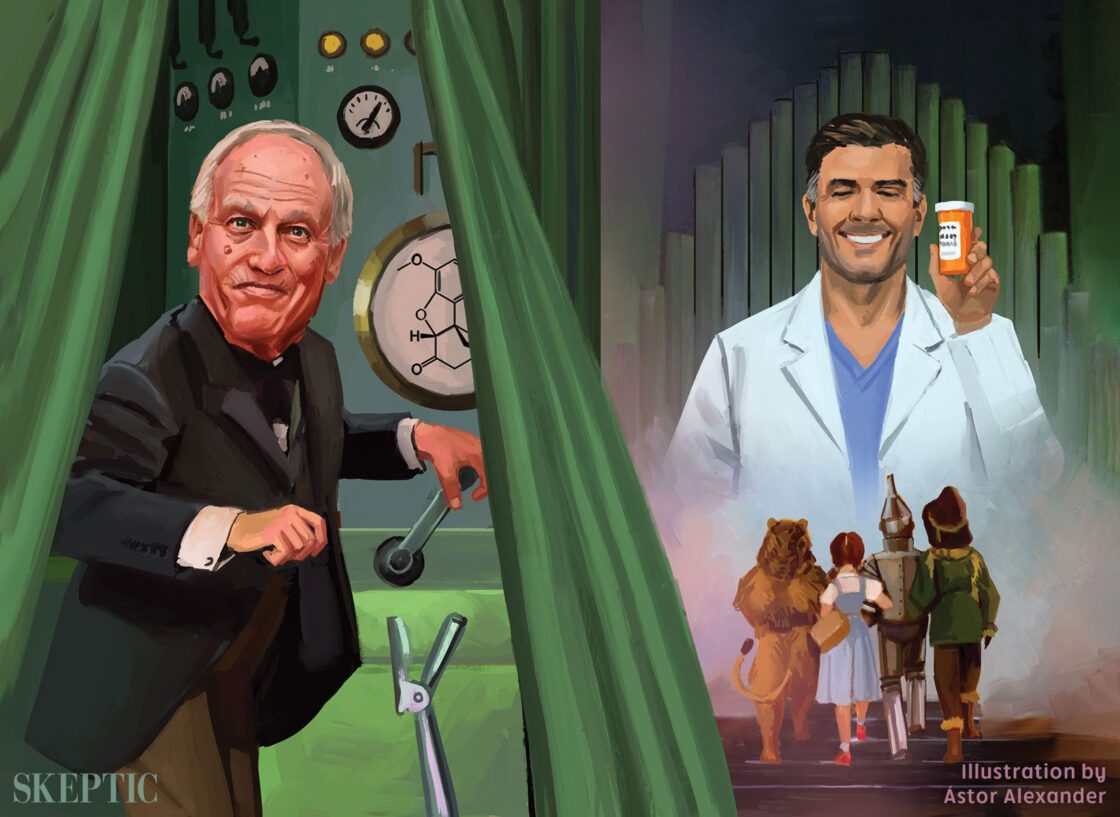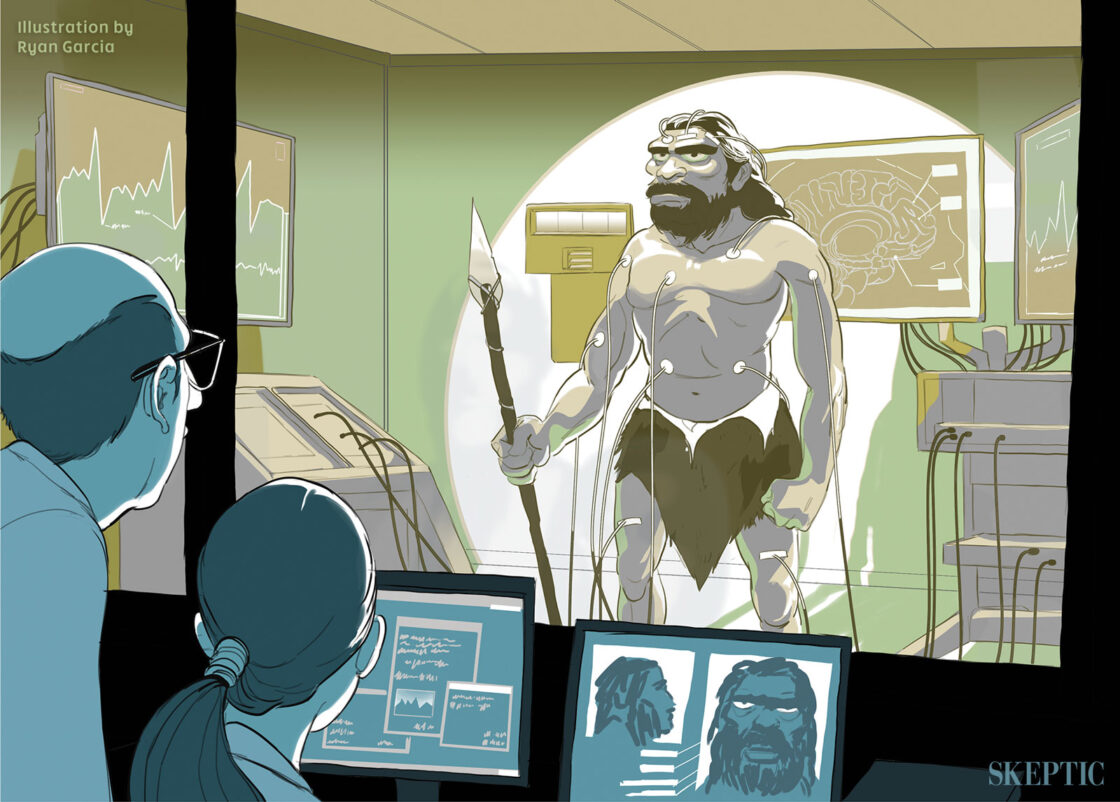In the tradition of making end-of-the-year lists of the “Top 10 X” I present my personal picks for the Top 10 Science Books of 2010. Most of these books are available in audio format as well as the old-school ink-on-bound-paper format, and I highly recommend Audible.com as the go-to source for easy listening to these selections while driving or riding your bike from your MP3 player or iPhone/iPod (use one ear bud instead of two so you can hear on-coming traffic, ambulances, etc.).
In reverse order I give you my Top 10 Science Books of 2010:
10Merchants of Doubt: How a Handful of Scientists Obscured the Truth on Issues from Tobacco Smoke to Global Warming
by Naomi Oreskes and Erik M. Conway
Oreskes and Conway tell an important story about the misuse of science to mislead the public on matters ranging from the risks of smoking to the reality of global warming. The people the authors accuse are themselves scientists—mostly physicists, former cold warriors who now serve a conservative agenda, and vested interests like the tobacco industry. And they name names, documenting their involvement in such issues as acid rain, the dangers of smoking and secondhand smoke, the ozone hole, global warming, the Strategic Defense Initiative, and the banning of DDT. These scientists aimed to sow seeds of public doubt on matters of settled science by casting aspersions on the science and the scientists who produce it. Oreskes, a professor of history and science studies at U.C. San Diego and science writer Conway also emphasize how journalists and Internet bloggers uncritically repeat these charges.
Order the book from Amazon.com
Order the Conway lecture from Skeptic.com
Behavioral economist Dan Ariely, the author of the highly acclaimed Predictably Irrational, expands on his first book to offer a more positive and personal take on the human capacity for irrationality in life, business, and public policy. Ariely bravely discusses his youthful accident that left him badly scarred and facing grueling physical therapy, using his experiences in treatment to discuss the nature of physical and psychological pain, and how this led him to study human thought and behavior, and how and why we consistently fail to act in our own best interest. Ariely is an experimentalist and he takes readers through experiments that reveal such idiosyncrasies as the IKEA effect (if you build something, pride and sentimental attachment are likely to give you an inflated sense of its quality) and the Baby Jessica effect (why we respond to one person’s suffering but not to the suffering of many). Ariely includes prescriptions for how to make personal and societal changes of behavior, and what patterns we must identify to improve how we love, live, work, innovate, manage, and govern.
This is one fun book to read. Roach’s wry humor and unconstrained descriptions of the very earthy side of the human condition (sex, death, the afterlife) makes her one of today’s most popular science writers. In her latest book Roach takes us behind the scenes of what it takes to live in space, and she asks the most interesting questions: Why is it impolite for astronauts to float upside down during conversations? Just how smelly does a spacecraft get after a two week mission? Roach gives us the stories Life magazine never covered, and for good reason: they are not glamorous or sexy or adventurous. Living in space is a nightmare of logistical problems that made me wonder why we don’t abandon human space flight entirely and just get all the science we need from robotic spacecraft … until I got to the end of this gripping read and realized that venturing to go where no one has gone before is what our species does.
by Paul Bloom
Would you wear Hitler’s sweater? What about the cardigan of Mr. Rogers? Most people say no to the first question and yes to the second, adding that they would feel more moral and upstanding wearing Mr. Rogers’ sweater. Why? Paul Bloom, one of the most interesting experimental psychologists working today, answers these and many other questions in this, his latest book (see also his previous Descartes’ Baby), in which he explores pleasure from evolutionary and social perspectives. By examining studies and anecdotes of pleasure-inducing activities such as eating, art, sex, and shopping, Bloom posits that pleasure takes us closer to the essence of a thing, be it animal, vegetable, or mineral. He argues that humans are hard-wired to give, as well as receive, pleasure. A study using mislabeled, cheap bottles of wine, wherein “40 experts said the wine with the fancy label was worth drinking, while only 12 said this of the cheap label,” demonstrates the subjective psychological influence behind what we find pleasurable.
by Christopher Chabris and Daniel Simons
Psychologists Christopher Chabris and and Dan Simons produced one of the most famous psychological experiments in history when they asked subjects to count the number of passes made by a team of players, in which half completely missed a person in a gorilla suit walk across the scene, stop and wave its arms, and exit stage right. In this book based on this and other research, the authors write about six everyday illusions of perception and thought, including the beliefs that: we pay attention more than we do, our memories are more detailed than they are, confident people are competent people, we know more than we actually do, and our brains have reserves of power that are easy to unlock. Through a host of studies, anecdotes, and logic, the authors debunk conventional wisdom about the workings of the mind and what experts really know about how the mind works.
Kevin Kelly, the editor and publisher of Whole Earth Review and one of the founders and editors of Wired magazine, explains why most of us have a love/hate relationship with new inventions, and why this conflict is inherent to all technology. But Kelly also argues that technology is an extension of life—and an acceleration of the mind. Technology is not anti-nature, but rather the “seventh kingdom” of life: it now shares with life certain biases, urges, needs and tendencies. The system of technology that Kelly calls the “technium” unconsciously “wants” to head in certain directions, just as do life and evolution. The technium functions as a living, natural system. Just as evolution has tendencies, urges, trajectories, established forms, and a direction, so too does the technium. Where is it headed? What is the true nature of its increasing presence in our society? And how do the goals of the technological agenda relate to humanity’s goals? Read this book to find out from one of the true visionaries of our time.
Order the book from Amazon.com
Order the lecture from Skeptic.com
When and how did the universe begin? Why are we here? Why is there something rather than nothing? What is the nature of reality? Why are the laws of nature so finely tuned as to allow for the existence of beings like ourselves? And, finally, is the apparent “grand design” of our universe evidence of a benevolent creator who set things in motion—or does science offer another explanation? The Grand Design attempts to answer these ultimate questions based on the most recent scientific evidence. For example, Mlodinow and Hawking show that according to quantum theory, the cosmos does not have just a single existence or history, but rather that every possible history of the universe exists simultaneously. When applied to the universe as a whole, this idea calls into question the very notion of cause and effect. The authors further explain that we ourselves are the product of quantum fluctuations in the very early universe, and show how quantum theory predicts the “multiverse”—the idea that ours is just one of many universes that appeared spontaneously out of nothing, each with different laws of nature. They conclude with a riveting assessment of M-theory, an explanation of the laws governing us and our universe that is currently the only viable candidate for a complete “theory of everything.” If confirmed, they write, it will be the unified theory that Einstein was looking for, and the ultimate triumph of human reason.
Order the book from Amazon.com
Order the lecture from Skeptic.com
by Sam Harris
Sam Harris’s first book, The End of Faith, ignited a worldwide debate about the validity of religion. In the aftermath, Harris discovered that most people—from religious fundamentalists to nonbelieving scientists—agree on one point: science has nothing to say on the subject of human values. Indeed, our failure to address questions of meaning and morality through science has now become the most common justification for religious faith. It is also the primary reason why so many secularists and religious moderates feel obligated to “respect” the hardened superstitions of their more devout neighbors. In this explosive new book, Sam Harris tears down the wall between scientific facts and human values, arguing that most people are simply mistaken about the relationship between morality and the rest of human knowledge. Harris urges us to think about morality in terms of human and animal well-being, viewing the experiences of conscious creatures as peaks and valleys on a “moral landscape.” Just as there is no such thing as Christian physics or Muslim algebra, there can be no Christian or Muslim morality.
Order the book from Skeptic.com
Order the lecture from Skeptic.com
Matt Ridley, the author of the bestselling science books Genome, The Red Queen, The Origins of Virtue, and Nature via Nurture, demonstrates in his new book that life is getting better—and at an accelerating rate. Food availability, income, and life span are up; disease, child mortality, and violence are down—all across the globe. Though the world is far from perfect, necessities and luxuries alike are getting cheaper; population growth is slowing; Africa is following Asia out of poverty; the Internet, the mobile phone, and container shipping are enriching people’s lives as never before. The pessimists who dominate public discourse insist that we will soon reach a turning point and things will start to get worse. But they have been saying this for 200 years. Yet Matt Ridley does more than describe how things are getting better. He explains why. Prosperity comes from everybody working for everybody else. The habit of exchange and specialization—which started more than 100,000 years ago—has created a collective brain that sets human living standards on a rising trend. The mutual dependence, trust, and sharing that result are causes for hope, not despair.
Order the book from Amazon.com
Order the lecture from Skeptic.com
I would never have imagined that a clump of cells could end up being such a compelling story, but such is the nature of narrative in the hands of a world-class storyteller such as Rebecca Skloot. The “immortality” comes from a line of cells that generated some of the most crucial innovations in modern medicine. They came from a woman named Henrietta Lacks, a mother of five in Baltimore, a poor African American migrant from the tobacco farms of Virginia, who died from a cruelly aggressive cancer at the age of 30 in 1951. A sample of her cancerous tissue, taken without her knowledge or consent, as was the custom then, turned out to provide one of the holy grails of mid-century biology: human cells that could survive in the lab. Known as HeLa cells (the convention is to use the first two letters of the first and last names of the subject from which the cells are taken), their stunning potency gave scientists a building block for countless breakthroughs, beginning with the cure for polio. Meanwhile, Henrietta’s family continued to live in poverty and frequently poor health, and their discovery decades later of her unknowing contribution left them full of pride, anger, and suspicion. Skloot includes her decade-long pursuit of the story behind the cells, and along the way gives readers detailed description of the science of using these cells to better humanity.
This article was published on December 30, 2010.

















Thank you so very much. Unlike ‘The Top 10 Celeb FAILS’ this is a list that we can all actually learn something from.